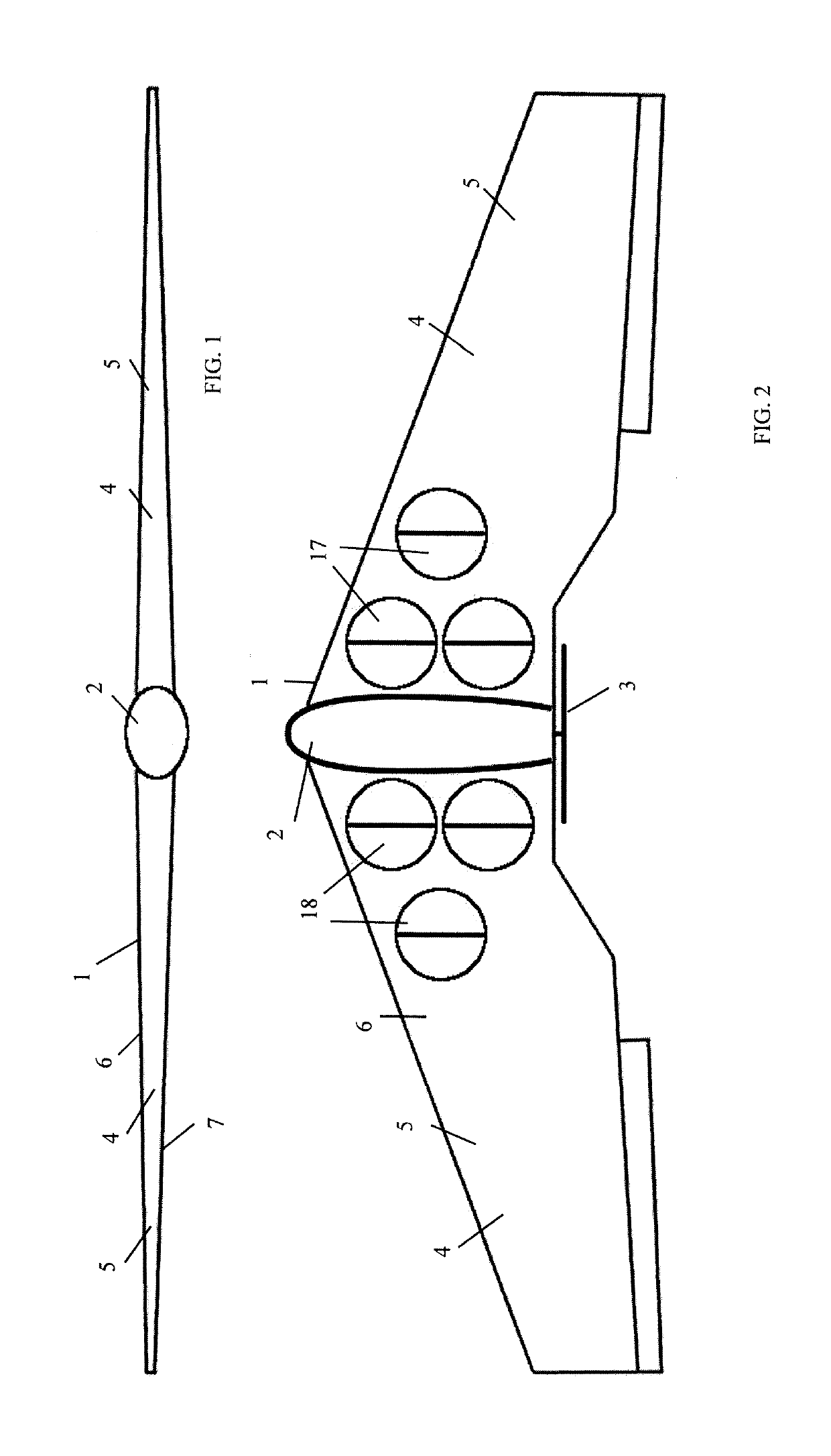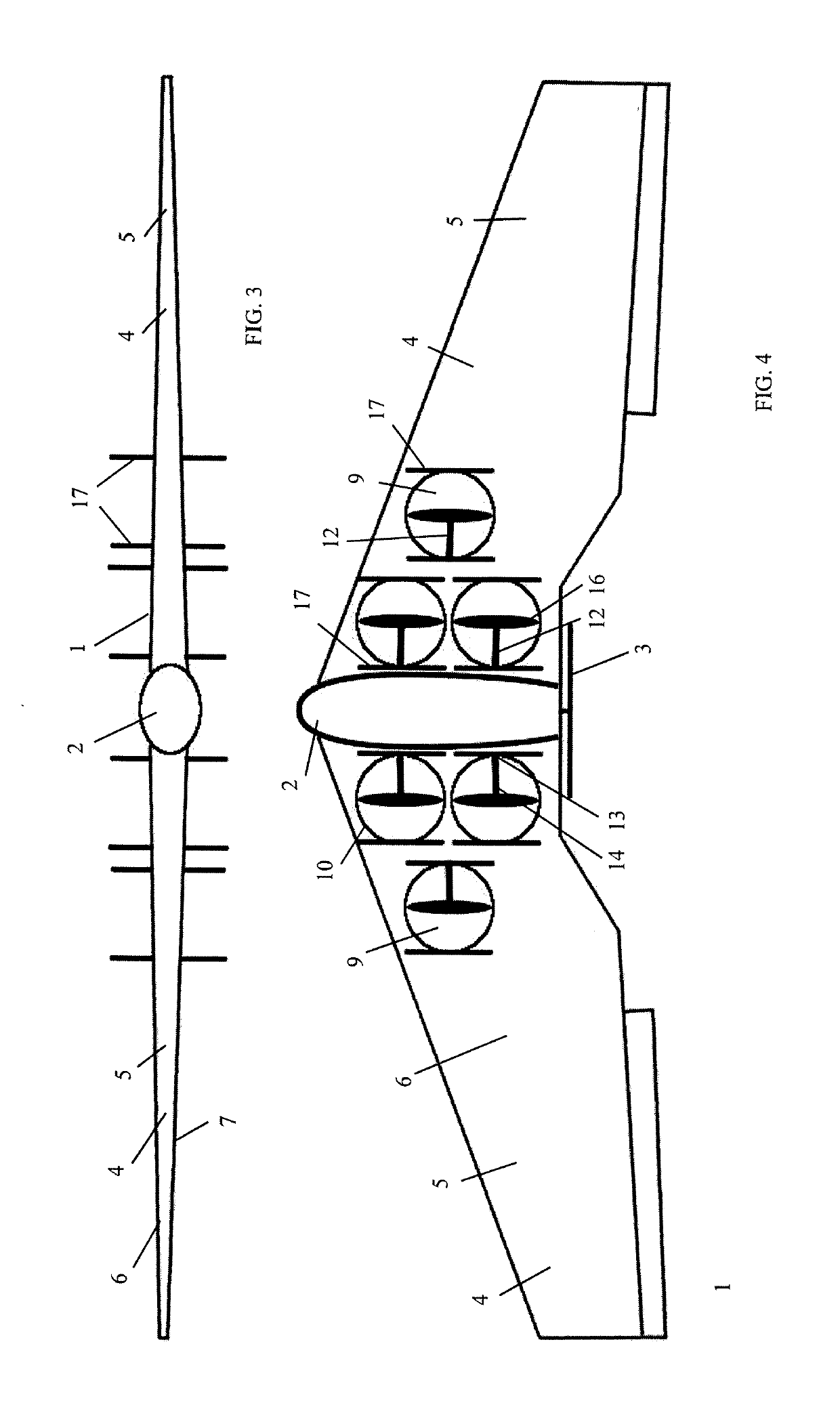Aircraft with internally housed propellor units
a propellor unit and internal housing technology, applied in aircrafts, vertical landing/take-off aircraft, transportation and packaging, etc., can solve the problems of low fuel/energy efficiency, loss of lift, and loss of aircra
- Summary
- Abstract
- Description
- Claims
- Application Information
AI Technical Summary
Problems solved by technology
Method used
Image
Examples
Embodiment Construction
[0022]Referencing then FIGS. 1-10, shown is the instant aircraft 1. As to the body of the aircraft 1, or airframe 2, in the preferred embodiment a tail-less “flying wing” design is shown. Removing the tail offsets weight, and has the added benefit of reducing the overall size of the plane. The aircraft 1 may or may not include a fuselage, although a fuselage is shown, hence airframe 2 means the body of the aircraft 1 with or without a fuselage. The airframe 2 that is selected needs to consider the needs of the vertical thrust propellors 16 for efficient operation. The airframe 2 simply requires two sides 4, and a swept wing 5 design is preferred. By using a swept wing design, the center of gravity (CG) that is needed for the wings 5 to operate efficiently can be moved back to match the center of gravity needed by the vertical thrust propellors 16. This will allow the ducts 9 to fit within the shape of the wing 5 and have the center of gravity located appropriately, as further descri...
PUM
 Login to View More
Login to View More Abstract
Description
Claims
Application Information
 Login to View More
Login to View More - R&D
- Intellectual Property
- Life Sciences
- Materials
- Tech Scout
- Unparalleled Data Quality
- Higher Quality Content
- 60% Fewer Hallucinations
Browse by: Latest US Patents, China's latest patents, Technical Efficacy Thesaurus, Application Domain, Technology Topic, Popular Technical Reports.
© 2025 PatSnap. All rights reserved.Legal|Privacy policy|Modern Slavery Act Transparency Statement|Sitemap|About US| Contact US: help@patsnap.com



